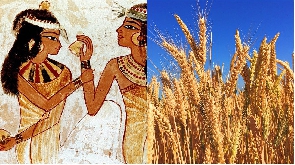The quest of mankind to guess and identify whether a pregnant woman will deliver a boy or girl dates as far back as women have been getting pregnant, it seems.
Ancient texts and oral literature have revealed several methods the people of old implored to predict the sex assigned at birth for babies yet to be born. In some cultures, if the mother craves sweets, it’s a girl; if she eats a lot of garlic, it’s also a girl.
If the mother has a healthy glow? It’s a boy. If the pupils of the pregnant woman are constantly dilated, then it is a boy. If she develops acne, it is a girl. Although some persons have testified that the above indicators work, nothing comes close to the use of barley and wheat by ancient Egyptians to determine the sex of a child.
According to the Papyrus Carlsberg Collection; an Egyptian papyrus manuscript dating back 3, 500 years, to find out the sex of a baby, the woman must first urinate into a bag of wheat and a bag of barley.
The bag that sprouts first will reveal the pregnancy. If the barley sprouts first, then the child would be a boy, and if it is wheat, the child would be a girl, though there is some controversy over the exact grains used, the technique works ninety per cent of the time. If neither bag sprouts, it means the woman is not pregnant.
This test again gives root to the belief that the ancient Egyptians were far advanced in medicine and science.
EAN/WA
General News of Saturday, 22 July 2023
Source: www.ghanaweb.com

















